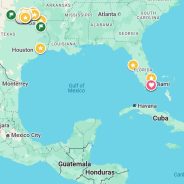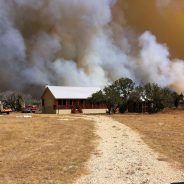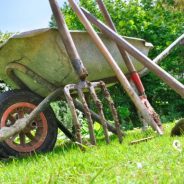Student Taken into Custody Following What’s Called a “Spoofing” Incident
May 5, 2025 – The Hopkins County Sheriff’s Office says a student has been taken into custody following what’s called a “spoofing” incident which targeted a teacher.
The Como-Pickton Consolidated ISD says a person called a teacher Friday from a spoofed number and threatened to shoot her if she didn’t change the caller’s grade.
Superintendent Dr. Greg Bower says: “The student suspect has been identified and caught by law enforcement. Let me reiterate that we have zero tolerance for this type of behavior. We want to thank the effort, work, and support of the Hopkins County Sheriff’s Department and Sheriff Tatum.”
Bower posted a statement on Facebook saying in part: ”We will pursue every legal option available against such behavior including maximum school discipline or other maximum legal actions at our discretion. Please take the time to speak with your child, regardless of grade level, to remind them of the seriousness of making any threatening statement or remarks, at school or outside of school, directed at any person within our school community.”
He continued: “We do not find there to be any danger, but to set minds at ease, we are going to double our law enforcement presence at school for the meanwhile. “

Sun Savvy Women: Taking Control of Skin Health and Ageing
April 5, 2025 – Sulphur Springs, Texas – Ladies, the sun is officially out for spring and will only heat up
more during summer. Make sure your skin is ready to take the heat with these sun exposure tips from the Hopkins County Health Care Foundation.
Sun exposure is the biggest threat to skin health. Exposure to the sun’s ultraviolet rays, otherwise known as UV, is the primary cause of skin cancer and is responsible for almost 90% of skin aging.
About 95% of solar radiation is UVA, which damages elastin and collagen deep within the skin layers, making skin thinner, weaker, and more prone to dark spots and wrinkles.
UVA is the most common UV used in tanning beds. Women have approximately 20% thinner skin than men, meaning there is less elastin and collagen to lose. Women’s bodies also naturally start to lose elastin and collagen at more dramatic rates after menopause, pronouncing the signs of aging more rapidly.
UVB, the other type of harmful UV, burns and blisters the top layers of skin, directly causing mutations to DNA in skin cells. Think of the “A” in UVA to mean ageing, and the “B’ in UVB to mean burning. Both UVA and UVB cause skin cancer.
Although most UV rays are UVA, regular sunscreens only protect from UVB because it is the type that visibly burns the skin. Broad spectrum sunscreen is preferable as it protects from both UVA and UVB. For babies or those with sensitive skin, sunscreens with the active ingredients of titanium dioxide and zinc oxide are gentlest.
Mineral and chemical sunscreens are two categories of sunscreens to choose from. Mineral sunscreens are effective immediately, coating the surface of the skin and reflecting UV off. They are more sensitive on skin and are generally reef safe for ocean swimming.
Chemical sunscreens take roughly 20 minutes to activate, but they allow the absorption of UV rays and deactivate them within the skin cells. This reaction converts UV into heat that is then released from the body. Both mineral and chemical sunscreens have pros and cons, so it is best for individuals to read up and decide which will work for them. UV rays can pass through clouds and glass, so it is important to wear sunscreen even on overcast days or for car rides. Daily wearing a broad-spectrum sunscreen with a SPF of at least 30 is recommended by the American Academy of Dermatology to prevent skin cancer. Choose a water-resistant sunscreen for swim days and reapply every 2 to 3 hours for full protection.
Reapplying can sound daunting when a full face of makeup is at risk of being ruined by pasty white sunscreen, but there are products and methods that can save face in more ways than one. Sunscreen sticks, spray sunscreens, and even mineral powder sunscreens apply well over makeup to freshen up skin protection every few hours.
The SPF in makeup is not enough on its own to protect the skin. While foundations may include SPF, the amount is too small of a percentage of the total mixture to provide true protection on its own.
Wondering how much is enough? For the face, a nickel size amount of sunscreen or the amount that fits on two fingers tips should cover it. For the rest of the body, roughly 6 to 8 teaspoons or a one ounce shot glass full of sunscreen provides adequate coverage.
SPF does not add up if layered. For example, if foundation has a SPF of 20 and a sunscreen powder is layered on top with a SPF of 30, the skin is protected at a rating of 30 SPF, not a cumulative 50.
While layering different forms of SPF does not increase the overall SPF, it does help to cover any missed spots. If the base SPF didn’t cover one area of skin, perhaps the powder will. Think of layering and reapplying as gap insurance against skin cancer.
1 in 5 Americans develop skin cancer during their lifetime, but that doesn’t mean it can’t be prevented. While skin cancer is the most common type of cancer, it is also the most preventable. By committing to protect and monitor the skin, skin stays stronger, healthier, and more youthful.

Texas Bill Would Remove Protection For School Librarians
April 5, 2025 – Texas House Bill 412, authored by Representative Mayes Middleton (R-Galveston), has successfully passed the House with bipartisan support (99-31), signaling a significant shift in the legal landscape concerning the distribution of potentially harmful material to minors. The bill seeks to eliminate broad exemptions in current Texas law that have shielded school officials, librarians, and other individuals from prosecution when distributing such content, provided it was for an “educational purpose.”
This legislative effort is rooted in concerns voiced by parents and Republican lawmakers regarding the presence of sexually explicit books within Texas public and school libraries. Proponents of the bill argue that these exemptions have allowed inappropriate material to be accessible to children, necessitating a change to ensure greater accountability. The passage of HB 412 is viewed as a victory for GOP lawmakers who have made the removal of such content a priority in their broader child protection agenda.
However, the legislation faced opposition from House Democrats during the debate. They argued that the bill represents an attack on school librarians and could have a chilling effect on the availability of diverse and relevant educational resources. Despite these concerns, the bipartisan vote in favor of the bill indicates a widespread desire among lawmakers to address the issue of harmful content accessible to minors in educational settings. State Representative Mitch Little (R-Frisco) emphasized the intent behind the bill, stating that educators who intentionally or recklessly expose children to harmful material “should be in fear in the State of Texas.” The bill now moves to the Senate for further consideration.

‘Gulf of America’ Bill Heads to the Texas House
April 5, 2025 – The Texas Senate has passed a bill that would officially rename the Gulf of Mexico to the “Gulf of America” in state law. Authored by Republican State Senator Mayes Middleton of Galveston, the legislation aims to replace all instances of “Gulf of Mexico” within the state’s legal code. This initiative follows an executive order issued on January 20th titled “Restoring Names That Honor American Greatness.”
The bill garnered significant support in the Senate, passing with a vote of 20 to 11. All opposing votes came from the Democratic members of the chamber. The legislation now moves to the Texas House of Representatives for consideration and potential further action. If passed by the House and signed into law, the “Gulf of America” would become the legally recognized name for the body of water within the state of Texas.
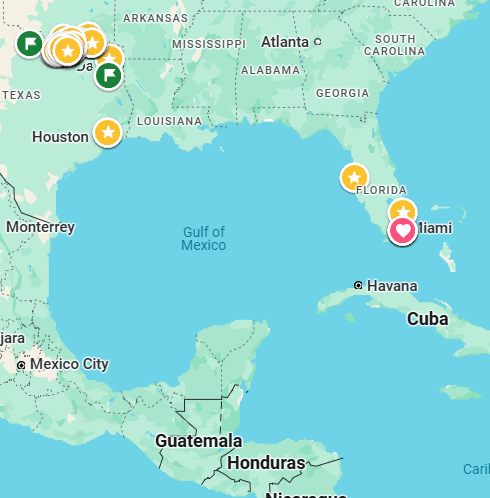
Texas Democrats Plan to Block School Voucher Law Implementation
April 4, 2025 – Texas Democrats are preparing to take legal action in an attempt to block a controversial school choice law recently signed into law. The law, which centers on a voucher system, would allow public funds to be used for private school tuition. Republicans argue the measure prioritizes disabled students and those from low-income families, offering them greater educational freedom. However, Democrats warn it could devastate public education by siphoning critical funding from already under-resourced public schools.

As the minority party in the Texas legislature, Democrats face an uphill battle. Representative Gene Wu emphasized that if stopping the law’s passage proves impossible, Democrats will negotiate for the best possible terms to minimize harm to public schools. “Communities are going to suffer greatly if the school system goes over the cliff, so rise up and demand change,” Wu urged, calling on public resistance to the bill.
Democrats argue that the voucher program disproportionately benefits wealthier families who can already afford private education, while undermining the public schools that serve the majority of Texas students. Legal challenges will likely focus on the Texas Constitution’s guarantee of a free public education and whether public funds can be lawfully redirected to private institutions.
Republican leaders, including Governor Greg Abbott, have made school choice a legislative priority, framing it as a solution to educational inequality. Yet critics note that private schools are not held to the same standards of accountability and inclusiveness as public schools, which could leave vulnerable students behind.
With legislative approval appearing increasingly likely, Democrats are gearing up for a legal and public relations battle. The outcome will shape the future of education in Texas and could set a national precedent as other states consider similar school choice legislation. The fight over this law is quickly becoming one of the state’s most contentious political battles.
Wildfire Awareness Month Highlights Proactive Safety Strategies
May 4, 2025 – COLLEGE STATION, Texas – In 2024, 5,187 wildfires burned over 1.3 million acres in Texas, and since wildfires have no boundaries, Texans should always be prepared for wildfires.
During Wildfire Awareness Month, Texas A&M Forest Service is highlighting the ways that Texans can not only prevent wildfires but how they can prepare for when they occur.
“Preparation for wildfires is key to protecting both lives and property,” said Erin O’Connor, Texas A&M Forest Service Public Information Officer. “During an emergency, you may only have minutes to act or evacuate. Having a plan and a go-kit can make all the difference. The better prepared Texans are, the safer they will be.”
Prepare a go-kit
A critical component to ensuring safety and preparedness for wildfires is the preparation of a go-kit that can be easily carried and include supplies for several days. A go-kit should include:
- Supplies for both people and pets.
- Prescription medications or other necessary medical equipment.
- Papers and important documents such as phone numbers and insurance and identification documents.
- Personal needs including food, water, clothes, money, chargers and a first aid kit.
- Priceless items such as photos, family heirlooms and any other irreplaceable or valuable items.
Evacuation plans
“It is important to have at least two evacuation routes planned out of your neighborhood in case the first route is blocked by heavy smoke or traffic,” said O’Connor.
Evacuation routes and shelter locations will be influenced by wildfire activity. It is critical to know how and where local emergency officials will communicate information, such as updates and instructions, to the public.
Preparing homes and land
“There are many practical steps that residents and landowners can take to reduce their risk from wildfire,” said O’Connor.
Residents can prepare around their homes using fire resistant landscaping and ensuring defensible spaces are maintained. Embers—small pieces of burning material easily carried by the wind—are the leading cause of home loss during wildfires. They can collect in small crevices around a home and enter through vents.
Simple, low-cost actions like cleaning out gutters, clearing leaves from garden beds and around wooden structures, removing leaf piles, and relocating firewood stacks at least 30 feet away from buildings can significantly reduce the risk of ember ignition.
Farm and ranch owners can prepare for wildfires by assessing the property for potential hazards, establishing contingency plans for feeding and relocating livestock if a fire is imminent and informing fire departments about access roads, water sources, fence lines and preferred wildfire suppression tactics.
Preparing communities
“The wildland urban interface is where humans and their structures meet or mix with undeveloped wildland,” said O’Connor. “Communities in the WUI are at the greatest risk for wildfire damage or loss. As Texas’ population grows and urban areas expand into more rural landscapes, the number of people that may be impacted by wildfires will increase.”
Communities and municipalities can create community wildfire protection plans to identify high-risk areas of the wildland urban interface and target potential fuels reduction projects, training needs and prevention strategies.
Texas A&M Forest Service works with communities to create community wildfire protection plans, assists neighborhoods with the management of the Firewise USA® program and provides risk assessment tools to ensure communities have the resources to be prepared for wildfire.
###
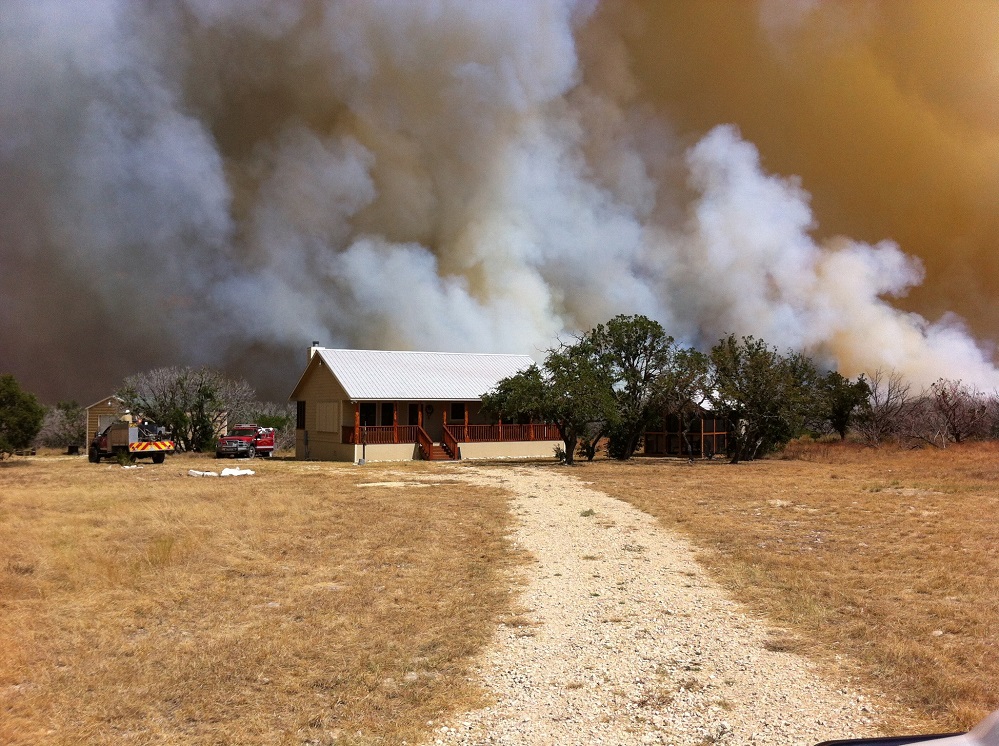
Paris District Road Report for Week of May 5, 2025
Paris — Here’s a look at work planned in Fannin and Grayson Counties for the week starting May 5, 2025. These schedules are subject to change due to weather conditions, equipment failure or other unforeseen issues. Motorists are advised to remain alert and pay special attention to all signs, barricades, and traffic controls, and reduce their speed as they approach and travel through work zones. They should also avoid distractions such as cell phones, eating, drinking, or car audio or navigation systems.
Safety Message: Work Zone Safety
Every day, crews across Texas work to build and maintain the state’s roads, sometimes separated from high-speed traffic by only a few feet. In recognition of National Work Zone Awareness Week, April 21-25, 2025, TxDOT calls on motorists to make driving safely a priority when passing through the state’s active work zones. In 2024, nearly 28,000 traffic crashes occurred in work zones in Texas, resulting in 215 deaths and another 825 serious injuries.
Most of the people killed in work zone crashes are drivers and their passengers. They made up 81% of the fatalities in 2024. Speeding, driver inattention and unsafe lane changes were among the top contributing factors in work zone crashes.
Driver safety
Work zones present a different and sometimes challenging environment for drivers to navigate. Motorists may encounter uneven pavement, narrow lanes, concrete barriers, slow-moving heavy equipment, and vehicles that make sudden stops. TxDOT’s “Be Safe. Drive Smart.” campaign offers five tips for safely driving through work zones:
- Slow down. Follow the speed limit and pay attention to road conditions. What’s safe for normal conditions may not be safe in a work zone.
- Stay alert. Focus on driving, avoid distractions, and put your phone away.
- Don’t tailgate. Give yourself room to stop in a hurry, should you need to. Rear-end collisions are the most common kind of work zone crashes.
- Watch out for road crews. Roadside workers want to get home safely too. Always follow instructions and be mindful of construction area road signs.
- Allow extra time. Road construction can slow things down. Plan ahead so you are not tempted to speed.
More work to do
TxDOT continues to work on increased safety measures and public outreach efforts to educate motorists about driving in work zones. We encourage everyone, from engineers and planners to drivers and pedestrians, to take responsibility for work zone safety. As part of this outreach, we remind drivers of the state’s Move Over or Slow Down law. It requires drivers to move over a lane or reduce their speed to 20 mph below the posted speed limit when approaching a TxDOT, emergency, law enforcement, tow truck, or utility vehicle stopped with flashing lights activated on the roadside or shoulder. Violation of this law can result in a fine of up to $1,250 for a first offense. Stricter penalties for drivers who cause serious injuries by failing to follow these rules now include possible jail time and a fine of up to $4,000.
Sherman Area (Fannin, Grayson Counties)
Contacts: Sherman Area Office (903) 892-6529; Grayson Co. Maintenance (903) 893-8831; Fannin Co. Maintenance (903) 583-7566.
Grayson County:
US 75, from the Collin County Line to FM 902. Construction on this project is expected to begin on May 5, 2025. This project will widen the US 75 mainlanes from the Collin County Line to FM 902 to six lanes. The project will also reconstruct the bridge at County Line Road and construct new u-turn bridges in Van Alstyne near Simmons Loop and in Howe south of Hall Cemetery Road. This project will convert the frontage roads from two-way operation to one-way operation. Two lanes on the US 75 main lanes will remain open in each direction during the daytime hours with occasional lane closures during the nighttime period. Watch for lane closures on the frontage roads during construction.
There will be nighttime lane closures on southbound US 75 between FM 121 in Van Alstyne and Haning Street in Howe the week of May 12th in order for the contractor to place concrete traffic barrier. The lane closures will begin each weeknight at 8:00 pm and all lanes will be reopened to traffic by 5:00 am the following morning.
US 75, from SH 91 (Texoma Parkway) to US 82. This project will rebuild the US 75 mainlanes from SH 91 to US 82 as well as reconstruct the entrance and exit ramps on US 75. The project will also reconstruct bridges at Taylor Street, Lamberth Street and the US 75 main lanes over US 82 and reconstruct the frontage road intersection at SH 91. A reduced speed limit of 60 mph on the US 75 mainlanes has been set for this construction project. Two lanes on the US 75 main lanes will remain open in each direction during the daytime hours with occasional further lane closures during the nighttime period. Watch for lane closures on the frontage roads during construction.
The US 75 frontage road u-turns at the US 82 frontage road intersection are closed to traffic to allow crews to begin work on a portion of the new US 75 mainlane bridge over US 82. During this closure, traffic is asked to go through the US 75 and US 82 frontage road intersection by making a series of left turns.
The northbound US 75 frontage road exit to SH 91 is closed to allow for construction of the pavement of the new US 75 frontage road intersection with SH 91. During this closure, traffic is asked to stay on the northbound frontage road to Taylor Street and take Taylor Street back to SH 91.
Eastbound and westbound US 82 will have a left lane closure to allow for construction of drilled shafts and columns for the new US 75 bridge over US 82. Traffic should expect delays as US 82 will be reduced to one lane.
The southbound frontage road from Taylor Street to SH 91 (Texoma Parkway) will be reduced to one lane to allow for construction of the new intersection. An all-way stop will be in place at the southbound US 75 frontage road intersection with SH 91 (Texoma Parkway) to control traffic. Westbound SH 91 traffic is reduced to one lane and will be required to stop at the southbound US 75 intersection.
US 75, from US 82 to North Loy Lake Road. This project will rebuild and widen the US 75 mainlanes from four lanes to six lanes as well as reconstruct the entrance and exit ramps on US 75. The project will also reconstruct bridges at FM 691, Iron Ore Creek and Spur 503, and add U-turn bridges at Loy Lake Road in Sherman and Spur 503 in Denison. A reduced speed limit of 65 mph on the US 75 mainlanes has been set for this construction project. Watch for shoulder closures and lane shifts on the mainlanes of US 75 as well as frontage road lane closures within the project. Watch for nighttime lane closures on the northbound and southbound US 75 mainlanes, as crews work to construct the new pavement section.
Beginning on May 6th around 9:00 pm, FM 691 between the northbound and southbound US 75 frontage road intersections will be closed in order for crews to place bridge beams. Eastbound FM 691 traffic will be required to turn right and take the southbound frontage road to the Fallon Street overpass where traffic can u-turn and return on the northbound frontage road to FM 691. Westbound FM 691 traffic will be required to turn right onto the northbound frontage road, then travel east along Spur 503, take the first exit and go under the bridge near Theresa Drive, and then take the westbound Spur 503 frontage road, make a u-turn at Loy Lake Road and then follow the southbound frontage road back to FM 691. All lanes are expected to be reopened to traffic by 5:00 am on May 7th.
Westbound Spur 503 is closed to traffic near US 75 as the overpass to southbound US 75 has been removed to allow for construction of the new overpass. During this closure traffic on westbound Spur 503 will be required to detour onto the frontage road at the temporary exit ramp west of Theresa Drive and continue along the frontage road to the Loy Lake Road intersection where traffic can make the U-turn to continue south on the US 75 frontage road to the entrance ramp before the FM 691 intersection.
The U-turn lanes for the US 75 frontage roads at FM 691 are closed to traffic to allow crews to work on constructing the middle portion of the new US 75 bridge over FM 691. During this closure traffic wishing to make a U-turn at the intersection is asked to turn left onto FM 691 and make another left at the next signal light.
The exit ramp from northbound US 75 to North Loy Lake Road in Denison is closed permanently. Travelers who wish to access North Loy Lake Road from northbound US 75 will detour up to Crawford Street, make a U-turn at the Crawford Street intersection, and head south on the frontage road to reach North Loy Lake Road.
The westbound Spur 503 ramp to northbound US 75 is closed to traffic. A temporary detour is in place to divert this traffic onto the frontage road. Traffic will exit Spur 503 onto the frontage road using the new detour, continue along the Spur 503 frontage road which runs into the US 75 frontage road to the Loy Lake Road intersection. Traffic can continue along the frontage road through Loy Lake Road and then take the next entrance ramp to northbound US 75.
US 75, from FM 1417 to SH 91 (Texoma Parkway). A reduced speed limit of 60 mph on the US 75 mainlanes has been set on the mainlanes for this construction project. Watch for shoulder closures and occasional lane closures on the northbound and southbound US 75 main lanes between SH 91 and FM 1417 as crews work on completing the remaining work on this project. Watch for occasional lane closures on the frontage roads between FM 1417 and SH 91.
Southbound US 75 between Center Street and Washington Street will be reduced to one lane on Friday night, May 9th starting at 7:00 pm in order to perform bridge repairs. The lane closures are expected to last thru Sunday afternoon, May 11th. Traffic is advised to expect delays on southbound US 75 during this weekend period and is encouraged to seek alternate routes.
US 75 Overlay, from near FM 84 to the Oklahoma State line. Beginning on March 5, 2025, crews will be working each night from Sunday night through Friday morning during the overnight period. Lane closures will be present at night for crews to overlay the roadway with hotmix. Lane closures will begin at 7:30 pm each night and should be reopened to traffic by 6 a.m.
US 75 full depth concrete repair, from the Collin County line to the Oklahoma State line. Crews will be working on US 75 each week from Sunday night through Friday morning during the overnight period. Lane closures will be present at night for crews to replace failed concrete sections. Lane closures will begin at 7:30 p.m. each night and should be reopened to traffic by 6 a.m. This work will extend from the Collin-Grayson County line to the Oklahoma State line.
SH 289, in Dorchester at the FM 902 intersection. This project will widen SH 289 on each side of the roadway to allow for the addition of a center left-turn lane. This project will also install traffic signals at this intersection. Watch for shoulder closures and occasional daytime lane closures on the northbound and southbound SH 289 main lanes as well as on FM 902. Motorists should expect delays during the daytime work hours as flaggers direct traffic through the work zone.
SH 5, in Van Alstyne from Williams Way to Blassingame Avenue. Watch for daytime lane closures on SH 5 as crews work to install a shared use bicycle and pedestrian trail. The trail will follow along SH 5 from the existing trail at Williams Way to Blassingame Avenue, then along Tolson Avenue, then along Main Street where it will connect with Van Alstyne Parkway. Motorists should expect delays during the daytime work hours as flaggers direct traffic through the work zone.
FM 121, from Main Street in Van Alstyne to SH 160. Watch for daytime lane closures as crews work to rehabilitate and widen the roadway to an overall width of 26 feet. Motorists should expect delays as signals and pilot cars direct traffic through the work zone.
US 82, from the SH 91 to the Fannin County. Watch for daytime lane closures on the US 82 eastbound and westbound main lanes as crews work to perform pavement repairs and then a pavement overlay on the surface. Motorists should expect delays during the daytime work hours.
US 75 debris pickup, from Collin County line to Oklahoma State line. Watch for mobile lane closures as workers pick up debris from the roadway every Sunday, Tuesday, and Thursday during the nighttime.
SH 91, from Martin Luther King Street to the Oklahoma State Line. Watch for daytime lane closures as maintenance crews perform a level up on the roadway. Motorists should expect delays as flaggers and pilot cars direct traffic through the work zone.
US 377, from US 82 to the Denton County Line. Watch for daytime lane closures as maintenance crews perform base repairs on the roadway. Motorists should expect delays as flaggers and pilot cars direct traffic through the work zone.
Fannin County:
Bonham State Park, Park Road 24. Park Road 24 in the Bonham State Park will have daytime lane closures while crews rehabilitate the main road, camping spots and parking lots within the park. Detour routes will be present during construction to allow for the flow of traffic.
FM 896 at Valley Creek. Watch for occasional daytime lane closures as crews perform bridge repairs. Motorists should expect delays as flaggers and pilot cars direct traffic through the work zone.
FM 68, at the North Sulphur River bridge. FM 68 at the North Sulphur River bridge is closed to through traffic as crews work on and replacing the bridge structure and roadway approaches. During the closure, traffic is asked to use SH 34, SH 11, and SH 78 as the detour route.
FM 2645, from FM 898 to FM 1753. Watch for daytime lane closures as crews work to rehabilitate and widen the roadway to an overall width of 26 feet. Motorists should expect delays as signals and pilot cars direct traffic through the work zone.
FM 274, from SH 78 to FM 1753. Watch for daytime lane closures as crews work to rehabilitate and widen the roadway to an overall width of 26 feet. Motorists should expect delays as signals and pilot cars direct traffic through the work zone.
SH 121 overpass at US 69. The SH 121 overpass at US 69 is closed to thru traffic while crews perform bridge repairs. All traffic will be required to take the exit for US 69 and then will be able to take the next entrance ramp back onto SH 121. A temporary signal is in place to control traffic on SH 121 and US 69 during this closure. Motorists should expect delays as signals control traffic through the construction zone.
CR 1202 at Tributary of Brushy Creek. CR 1202 at Tributary of Brushy Creek has an onsite detour in place to allow for replacement of the bridge. Traffic is asked to approach the detour shift slowly and drive an appropriate speed through the work zone while crews replace the bridge structure.
CR 2865 at Sanders Creek Tributary. CR 2865 at Sanders Creek Tributary will be closed to traffic on Monday, April 21 to allow for replacement of the bridge. Traffic will be required to detour onto CR 2815, CR 2840 and CR 2825 while the bridge structure is being replaced.
FM 68, from SH 78 to FM 271. Watch for daytime lane closures as crews work to rehabilitate and widen the roadway to an overall width of 28 feet. Motorists should expect delays as signals and pilot cars direct traffic through the work zone.
SH 78, from US 82 to the Oklahoma State line. Watch for daytime shoulder closures and occasional daytime lane closures as workers install sloped-end treatments on drainage structures and replace bridge rail and guardrail.
SH 50, from SH 34 to the Hunt County Line. Watch for daytime lane closures as maintenance crews perform a level up on the roadway. Motorists should expect delays as flaggers and pilot cars direct traffic through the work zone.
FM 64, from SH 34 to the Delta County Line. Watch for daytime lane closures as maintenance crews perform a level up on the roadway. Motorists should expect delays as flaggers and pilot cars direct traffic through the work zone.
SH 121, from SH 56 to SH 11. Watch for mobile lane closures as maintenance crews perform a sweeping operation to remove loose material from the roadway. Motorists should expect delays from the mobile operation in the work zone.
Sulphur Springs Area (Hopkins, Franklin Counties):
Contacts: Sulphur Springs Area Office (903) 885-9514; Franklin Co. Maintenance (903) 537-4976; Hopkins Co. Maintenance (903) 885-4031.
Hopkins County: SH 19, from I-30 to Rains County Line. Crews will be rehabbing the existing road. Watch for lane shifts within the work area. Expect slower moving traffic.
Hopkins County: IH 30 at Bill Bradford. Watch for crews performing repairs to concrete bridge rail. Expect slower moving traffic.
Hopkins County: FM 2653. Watch for crews performing pavement repairs. Watch for flagging operations and slower moving traffic.
Paris Area (Delta, Lamar, Red River Counties)
Contacts: Paris Area Office (903) 784-1357; Delta Co. Maintenance (903) 395-2139; Lamar Co. Maintenance (903) 785-4468; Red River Co. Maintenance (903) 427-3561.
Lamar County:
Loop 286, from FM 1497 around the north loop to FM 1507. Watch for temporary lane and shoulder closures and traffic merges while crews improve guardrail and drainage structures and perform bridge maintenance.
FM 1497, from FM 1184 to FM 3426. Watch for temporary lane and shoulder closures while crews rehabilitate the existing pavement and improve drainage structures
US 82 / Lamar Avenue, from 33rd street to 42nd street in Paris. Watch for temporary lane and shoulder closures in the nighttime hours while crews improve signals, install a raised center median, and resurface the roadway.
BU 271 B, from 18th Street SE to 34th Street SE. Watch for temporary lane and shoulder closures while crews install sidewalk on the north and south sides of the roadway.
SH 19/24, Lamar & Delta Counties: from LP 286 intersection to SH 19. Watch for temporary lane closures and lane shifts while crews resurface the roadway, perform bridge rail upgrades, and bridge maintenance.
US 271, Lamar & Red River Counties: from FM 196 North to SH 37. Watch for temporary shoulder closures and trucks entering and exiting the highway as crews remove tree and brush from within right of way.
US 82, Lamar & Red River Counties: from State Loop 286 in Paris to Bowie County Line in Red River County. Watch for temporary lane and shoulder closures while crews improve drainage structures.
Delta County:
SH 24, at Doctor’s Creek. Watch for temporary shoulder closures and trucks entering and exiting the highway as crews perform bridge maintenance on the northbound structure.
SH 154, from SH 19 to BU 24. Watch for temporary lane and shoulder closures while crews improve drainage structures.
Red River County:
FM 2120, from FM 2573 to SH 37. Watch for temporary lane and shoulder closures while crews rehabilitate the existing pavement and improve drainage structures.
FM 1487, from FM 910 to FM 412. Watch for temporary lane and shoulder closures while crews rehabilitate the existing pavement and improve drainage structures.
Northeast Texas Trail, Clarksville, Texas. Watch for trucks and equipment entering and exiting streets and highways while crews construct the off-system trail.
Northeast Texas Trail, from BU 82J to Annona East City Limits. Watch for trucks and equipment entering and exiting streets and highways while crews construct the off-system trail.
BU 82 J at East Langford Creek. Watch for temporary lane closures while crews perform bridge maintenance operations.
BU 82 J, from FM 2825 to High Street (Clarksville). Watch for temporary lane and shoulder closures while crews install sidewalk on the south sides of the roadway.
Greenville Area (Hunt, Rains Counties)
Contacts: Greenville Area Office (903) 455-2363; Hunt Co. Maintenance (903) 455-2303; Rains Co. Maintenance (903) 473-2682.
Hunt County:
SH 11, from FM 2655 to SH 24. This project will add shoulders and replace drainage structures. The contractor has set barricades and is currently widening shoulders and performing ditch work. Contractor processed material and dried out material at various locations. Concrete footings poured and culverts were prepped. Next week will be more structure work along with seeding operations. Please be aware of workers and watch for work zones when traveling in this area.
FM 1563, from SH 50 to SH 2655: This is a 2.7-mile rehabilitation project that will widen the existing roadway. The contractor has set work zone signs and barricades. Contractor is currently finishing cement treatment on last section of project. Ride testing and cover prime scheduled for next week. New guard rail placement is completed and work on mow strip is ongoing. Driveways, signage and mailboxes will be ongoing next week. Please be aware of workers and watch for work zones when traveling in this area.
FM 2642, from FM 35 to SH 66: The contractor has set work zone signs and barricades. The contractor is grading riprap, forming inlets and cleaning and patching cross culverts The contractor will also be addressing sidewalk near the DGNO RR crossing and placing asphalt for PH 1B traffic switch. Traffic switch has been completed and milling of existing roadway is underway on FM 35. Please slow down and be aware of workers and watch for work zones when traveling in this area.
FM 512, From SH 34 to FM 118. The contractor has placed barricades and work zone traffic signs. The contractor has begun repair work on base and subgrade failures. The contractor has completed temporary seeding and subgrade widening. Construction on culverts and grading of ditches, seeding and driveways will be scheduled for next week. Please be aware of workers and watch for work zones when traveling in this area.
I-30 interchange improvements from Monte Stratton to FM 1903. The contractor has set barricades and advance warning signs. The contractor has been working on placing embankment for wire walls at FM 1903 and FM 1570 and poured the cap abutment at FM 1570. and poured the back wall at FM 1570. The contractor will be setting panels under nightly lane closures. Steel tying is ongoing on the project. Please be aware of workers and watch for work zones when traveling in this area
I-30 Improvements from CR2511 to FM 36. The contractor will be moving barrier during nighttime lane closures and milling shoulders and adding temp paving. Contractor has ongoing box culvert work near FM 1565 plans to restore the frontage road pavement during this time. Grading work on the eastbound main lanes and westbound frontage roads will be ongoing. Grading for detour paving along EBFR and EBML between 1565 and 36 o Grading for detour paving along WBFR and WBML between 1565 and 36 Grading for detour paving WBFR 2511 area. Hot mix detour paving along EBML 1565 and 36 area. Temporary walls are being installed and dirt work with detours are ongoing throughout the project. Contractor will be pumping water and drying material throughout project.
Hunt and Rains Counties Hunt County and Rains maintenance crews will be performing pothole and sign repair work throughout Hunt and Rains County.
Hunt and Rains County maintenance sections will be working on mailboxes, potholes and signage. Crews will begin overlay on FM 6 from SH 66 in Caddo Mills to Collin County Line. Overlay work ongoing on FM 272 from SH 69 to FM 816. Edging work FM1566 from FM 118 to SH34. Vegetative edge spraying will be ongoing throughout the county.
Rains maintenance section will be working on potholes, signs and mailboxes. Rains maintenance section will be working on FM 1567 addressing edges and rutting. Ranis crew will work on FM 47 and repair Tawakoni State Par. Vegetative spot spraying will be ongoing throughout the county. Please be aware of workers and watch for work zones when traveling in this area.
###

Energize Your Tomato Plants From Master Gardener David Wall
May 4, 2025 – Now that your tomato plants are up and growing, a mixture of yeast, sugar, baking soda and water can further improve the fruit. Start with a mixture of yeast which can be found in most grocery stores. Add some sugar to act as a food source for the yeast, and warm water to activate it. Additionally, a small amount of baking soda helps balance the soil pH. These ingredients encourage your tomato plants to thrive.
Dissolve one packet of dry yeast in a cup or glass of warm water. Next, add a tablespoon of sugar and stir until dissolved. Let sit for about 10 minutes to allow the yeast to activate and become frothy. Then, add a teaspoon of baking soda and stir well. Once the ingredients are combined, dilute the mixture with a gallon of water, ensuring it’s well mixed. This is your yeast stimulant.
For the best results, add the mixture to the base of your tomato plants early in the morning or late in the afternoon to avoid daytime heat. Water each plant thoroughly to ensure the mixture reaches the root zone where it can be most effective, BUT don’t over water!. Apply every two weeks during the growing season. Be sure to water your plants as usual between applications to maintain consistent moisture content.
The science behind all this lies in the mixture’s ability to improve soil microbiology. Yeast helps microorganism growth which, in turn, helps decompose organic matter, releasing nutrients needed for plant growth. The sugar provides immediate energy for microbes, while the baking soda helps maintain a favorable soil pH. The mixture creates conditions for tomato plants to absorb nutrients efficiently with the end result being healthier and more productive plants.
Most importantly, don’t let this mixture replace other practices needed for growing tomatoes.
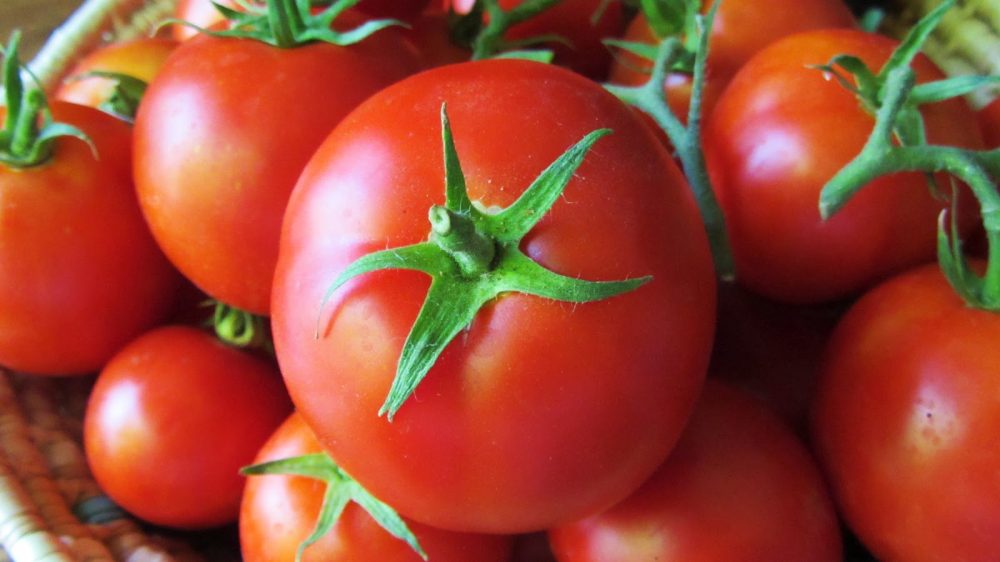
Wildcats Baseball Team and the Ladycat Softball Team won Playoff Games Thursday night
May 2, 2025 – Both the Sulphur Springs Wildcats baseball team and the Ladycat softball team won playoff games Thursday night.
The Ladycats claimed a 1-0 pitchers duel vs. Gilmer in their best-of-three area-round series at Mt. Pleasant. Game two of the series will be at 5 p.m. Friday and will be broadcast on KSST. Game three, if necessary, will be played shortly after game two.
The Wildcats took a 2-1 win over Nevada Community in game-one of their best-of-three bi-district series at Lone Oak, in a game broadcast on KSST.
Pitchers Kaden Mitchell and Deacon Carpenter combined their efforts for the win.
Senior Kaden Mitchell pitched six innings, striking out a hitter with runners at second and third to end the sixth inning.
Freshman Deacon Carpenter pitched a perfect seventh inning … striking out two
… to earn a save.
Mason Davis doubled in Lane Fouse, and Alex Macias singled in Davis in the Wildcats’ two-run second inng.
Game two is at 7 Friday night in Lone Oak.

Sulphur Springs did Well At the State Track Meet in Austin
May 2, 2025 – At the state track meet in Austin, Sulphur Springs Wildcat pole vaulter Jaicee Jasmer won the state championship and set a new 4A state record and a new UIL state meet record, clearing 14 feet, four inches. It’s the second year in a row for Jaicee to win the girls’ pole vault state title.
Wildcat boys pole vaulter Ty Bybee finished third at the state meet, clearing 15 feet. Two athletes tied for first at 15 feet, six inches.
Creed Whisenhunt took third in the 100-meter dash with a time of 10.59 seconds, seven-tenths of a second behind the first-place finisher.







